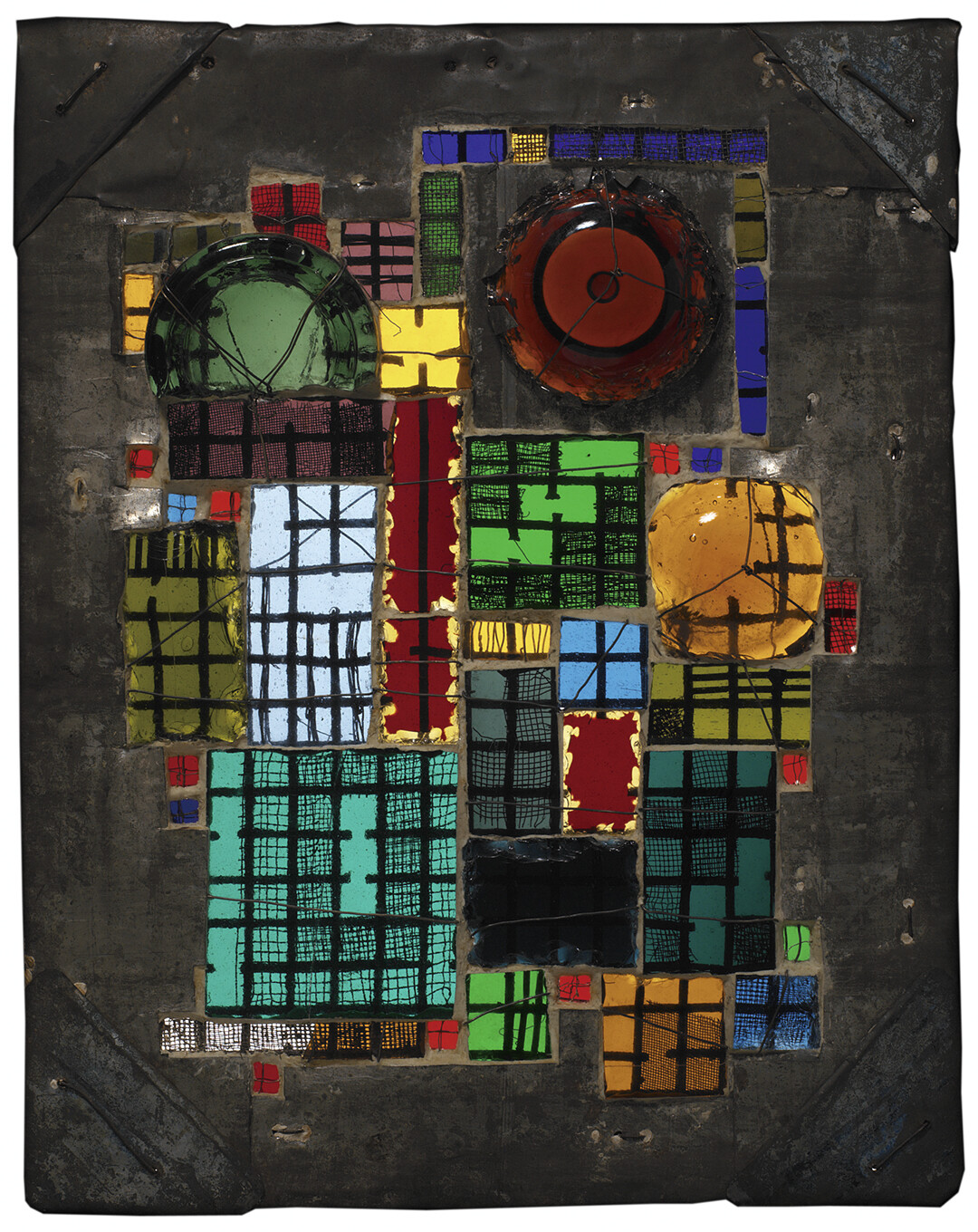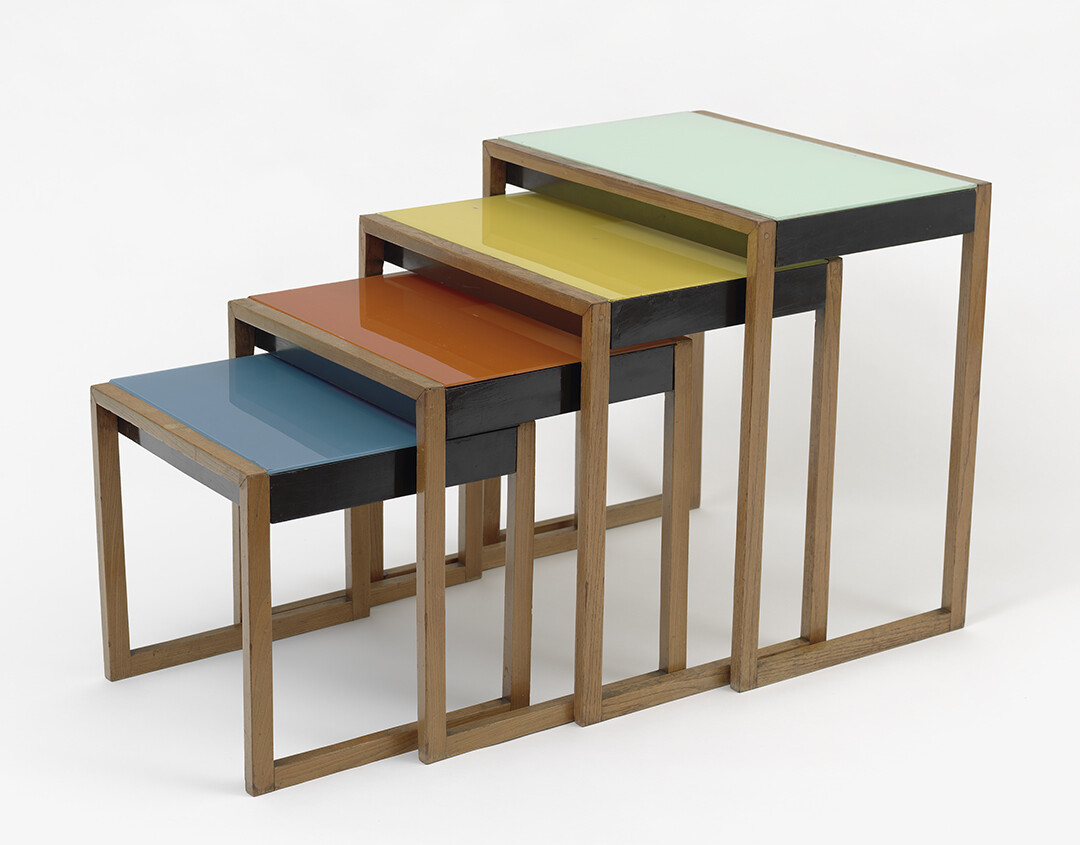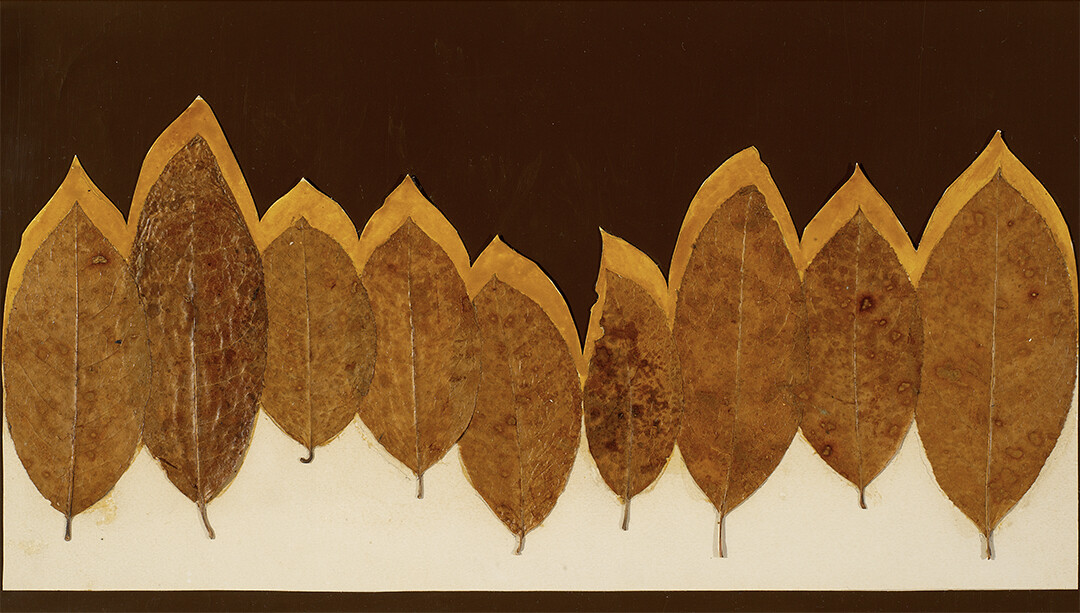JOSEF ALBERS: PEDAGOGICAL EXPERIMENTS
HAPPENINGText: Alma Reyes
Apart from paper, other materials were also applied in Albers’ courses. He created the colorful Scherben im Gitterbild (Shards in Screens) (ca. 1921) while studying at the glass painting workshop at the Bauhaus.

JosefAlbers, Scherben im Gitterbild (Shards in Screens), ca. 1921, The Josef and Anni Albers Foundation © The Josef and Anni Albers Foundation / JASPAR, Tokyo, 2023 G3217, Photo: Tim Nighswander/Imaging4Art
The assemblage consists of glass, wire, and metal, mounted onto a sheet-metal frame. As a Catholic, Albers had been fascinated by glass windows in churches, and lingered on with this material more seriously as a student. It was said that he had little money during his academic years, and often scavenged scraps from city dumps to use them for his research.

JosefAlbers, Stacking tables, ca. 1927, The Josef and Anni Albers Foundation © The Josef and Anni Albers Foundation / JASPAR, Tokyo, 2023 G3217, Photo: Tim Nighswander/Imaging4Art
One is struck by a chromatic set of four stacked tables placed in the center of the first hall. During Albers’ tenure as artistic director of the furniture workshop at the Bauhaus, he designed the timeless Stacking tables (1927) for the Moellenhof House in Berlin. Crafted in ash veneer with lacquer and painted glass tops in light blue, orange red, yellow and turquoise, the furniture embodies flexibility and practicality for easy storage, and at the same time, clear geometric shapes, which identify Albers’ fundamental principles in design.

Josef Albers, Leaf study I, ca. 1940, The Josef and Anni Albers Foundation © The Josef and Anni Albers Foundation / JASPAR, Tokyo, 2023 G3217 Photo: Tim Nighswander/Imaging4Art
By 1933, Albers moved to the U.S. to teach at the Black Mountain College in North Carolina. His material study further expanded, such as toward implementation of elements in nature. He also worked on abstract painting and printmaking. On display is Leaf study I (1940), illustrating a composition of brown leaves in varied tones and textures. By mounting them on colored paper, the leaves imbue a sense of rhythm and depth. Albers claimed, “The leaves improving the paper and the paper improving the leaves.”
Read more ...





